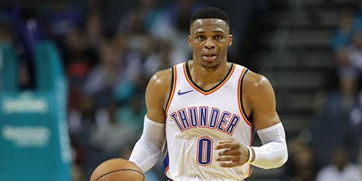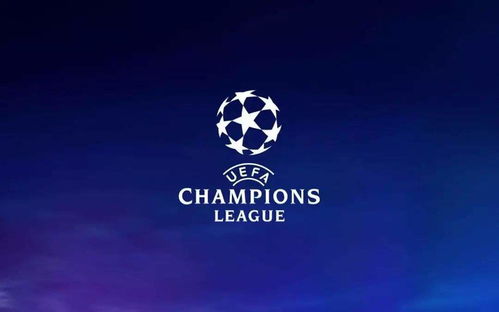世界杯广告语
Exploring the World Cup Advertising Phenomenon
The FIFA World Cup is not just a global sporting event; it's a colossal platform for advertising and marketing. Companies worldwide eagerly leverage this unparalleled opportunity to connect with billions of viewers, using creativity and strategic placement to enhance brand visibility and engagement.
Evolution of World Cup Advertising
Since its inception, World Cup advertising has evolved significantly, mirroring advancements in technology, changes in consumer behavior, and shifts in global socioeconomic landscapes. Initially, advertisements were limited to television and print media, targeting primarily local audiences. However, with the advent of digital media and social platforms, the reach and impact of these campaigns have expanded exponentially.
Strategic Importance
1.
Global Reach
: The World Cup attracts a massive global audience, transcending cultural, linguistic, and geographical barriers. Advertisers capitalize on this vast viewership to achieve unprecedented brand exposure.2.
Emotional Engagement
: Football (soccer) evokes deep emotional connections among fans worldwide. Advertisers tap into these emotions to create memorable campaigns that resonate with diverse audiences.3.
Cultural Relevance
: Brands often align their campaigns with the cultural nuances and passions associated with football in different countries. This localization enhances relevance and consumer affinity.Key Trends and Innovations
1.
MultiChannel Campaigns
: Modern campaigns integrate television, digital platforms, social media, and experiential marketing to maximize reach and engagement.2.
Interactive Experiences
: Interactive elements such as polls, contests, and realtime updates encourage active participation and amplify campaign impact.
3.
Celebrity Endorsements
: Leveraging football stars and influencers enhances credibility and extends campaign reach beyond traditional advertising metrics.4.
Sponsorship Integration
: Official sponsors seamlessly integrate their branding into tournament visuals, venues, and merchandise, ensuring omnipresent brand visibility.Case Studies: Successful Campaigns
1.
Nike's "Write the Future" (2010)
: This iconic campaign featured football stars in dramatic scenarios, resonating globally and becoming a benchmark for sports advertising.2.
CocaCola's "Share a Coke" (2014)
: Personalized bottles with footballthemed names capitalized on the tournament's social atmosphere, driving consumer engagement.3.
Adidas' "Tango Squad FC" (2018)
: A digitalfirst campaign leveraging social media to engage young football enthusiasts and showcase Adidas' products.Challenges and Considerations
1.
Saturation and Competition
: With numerous brands vying for attention, standing out requires creativity, authenticity, and strategic planning.2.
Cultural Sensitivity
: Advertisers must navigate cultural differences and sensitivities across diverse markets to avoid controversies.3.
Measuring ROI
: Assessing the effectiveness of World Cup campaigns remains challenging due to the complex interplay of metrics such as reach, engagement, and brand sentiment.Future Outlook
1.
Technological Integration
: Augmented reality (AR), virtual reality (VR), and artificial intelligence (AI) are expected to revolutionize World Cup advertising, offering immersive and personalized experiences.2.
Sustainability and Social Impact
: Increasing consumer awareness about environmental and social issues necessitates campaigns that align with sustainable practices and social responsibility.3.
DataDriven Insights
: Advances in data analytics enable advertisers to optimize campaigns in realtime, enhancing targeting and effectiveness.Conclusion
World Cup advertising continues to evolve, driven by technological advancements, shifting consumer behaviors, and global connectivity. Successful campaigns resonate deeply with audiences, leveraging the tournament's emotional appeal and cultural significance. Looking ahead, the integration of new technologies and a focus on sustainability will shape the future landscape of World Cup advertising, reaffirming its status as a premier platform for global brands.
By understanding these dynamics and embracing innovation, advertisers can leverage the World Cup not just as a marketing opportunity but as a transformative experience that connects brands with billions worldwide.
体育资讯
MORE>-
09-27欧罗巴激战预告:法兰克福主场迎战比尔森,谁能在这场关键对决中脱颖而出?
-
09-27穿越时空的荣耀对决,2004年NBA全明星赛的璀璨瞬间
-
09-27沙欣:我们必须从惨败吸取教训,周五在主场做出回应
-
09-27回溯经典,2007年NBA全明星赛的璀璨瞬间与巨星对决
-
09-27正式复出!泽卡随泰山赴客场,拿中超弱旅开刀,前场新三叉戟首秀
-
09-27深度解析!揭秘NBA数据库,数据驱动的篮球世界洞察
-
09-27穿越时空的篮球盛宴——2013年NBA全明星赛回顾与经典瞬间
-
09-27股民又着急找回密码,数字时代下的金融安全与隐私保护
-
09-27独家深度解析!休斯顿火箭季前赛新面貌,超级巨星的转型与球队重建之路
-
09-27东北前首富还不起钱!4家银行急了
-
09-27深度解析,NBA季前赛,新星崛起,老将试炼的舞台
-
09-26意甲米兰德比揭示问题,迪马尔科破僵局,加比亚绝杀更加关键
-
09-262018年NBA季后赛,传奇对决,历史瞬间与未来启示录
-
09-26苏醒,音乐路上的孤独探索者
-
09-26恒大曾想归化大外援若有神塔特谢拉格德斯国足能进世界杯?
- 搜索
- 最近发表
-
- 欧罗巴激战预告:法兰克福主场迎战比尔森,谁能在这场关键对决中脱颖而出?
- 离岸人民币兑美元再度涨破7.00大关,背后的原因、影响及未来展望
- 意甲德比烽烟再起,国米3:2力克拉齐奥,蓝黑军团强势复苏的启示录
- 地震瞬间一家四口带行李秒出门
- 穿越时空的荣耀对决,2004年NBA全明星赛的璀璨瞬间
- 野猪泛滥,生态失衡的警钟已在全国26省份敲响
- 揭秘兰斯·史蒂芬森,重塑科技与创新的不朽传奇
- 斯科尔斯:切尔西有很多天赋球员,但中锋和门将有点让人担心
- 沙欣:我们必须从惨败吸取教训,周五在主场做出回应
- 揭秘篮球巨星布兰登·詹宁斯,从崛起的风暴到职业转型的挑战
- 河南嵩县300万只蜜蜂突然死亡,一场生态与经济的双重危机
- 回溯经典,2007年NBA全明星赛的璀璨瞬间与巨星对决
- 正式复出!泽卡随泰山赴客场,拿中超弱旅开刀,前场新三叉戟首秀
- 东北雨姐哭了,有问题倾家荡产都赔
- 探索未来知识海洋,带你走进儿童科普的新天地——走进少儿科教频道
- 激战五巨头!雄鹿强势逆袭,篮网主场沦陷,谁将引领东部新格局?
- 勇士裁掉夏联表现不俗的锋线新星,他仍有机会冲击双向合同?
- 深度剖析,篮球巨星史蒂芬·杰克逊——球场智慧与传奇的交织
- 许家印最信任的男人,重罚背后的商业伦理与信任危机
- 校媛麻辣烫,媛字背后的美好与温情
- 标签列表
-
- 欧洲杯为什么没有直播 (12)
- 2024年欧洲杯预选赛 (23)
- 2024欧洲杯主办城市 (18)
- 2024欧洲杯参赛队伍有多少个 (9)
- 欧洲杯有多少只球队参加 (12)
- 2024欧洲杯百度百科 (17)
- 欧洲杯共多少场比赛 (11)
- 欧洲杯怎么看回放 (12)
- 欧洲杯2024在哪个国家 (11)
- 在哪里可以看欧洲杯预选赛 (14)
- 欧洲杯在哪里看直播 (10)
- 欧洲杯在哪竞猜 (10)
- 欧洲杯在哪竞彩 (12)
- 欧洲杯在哪个国家举行2024 (10)
- 欧洲杯每场比赛场地 (15)
- 2024欧洲杯比赛时间 (15)
- 2024欧洲杯预选赛 (12)
- 欧洲杯多少支球队参加 (11)
- 欧洲杯一共多少场 (12)
- 欧洲杯一场多少人 (12)
- 直播app (12)
- 直播网站 (15)
- 直播软件 (13)
- 直播 (10)
- 直播吧 (22)




